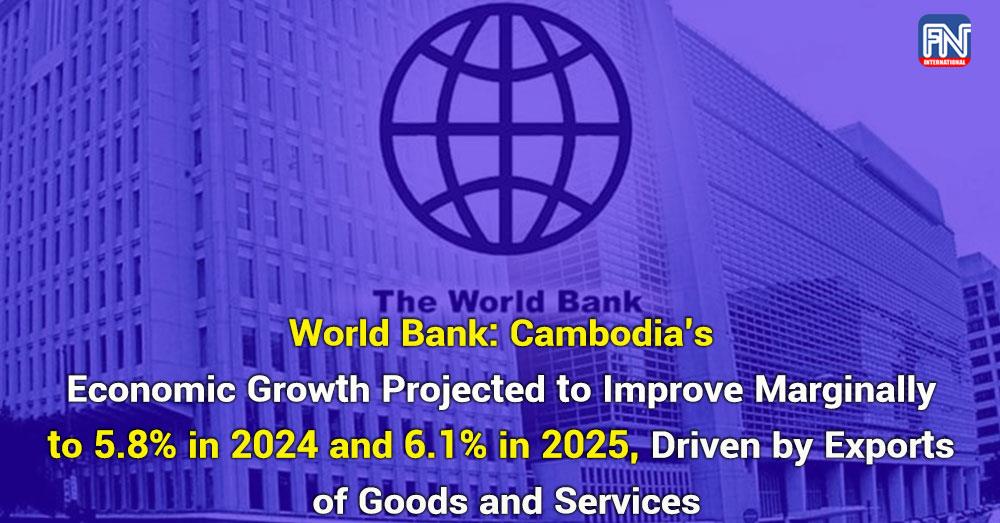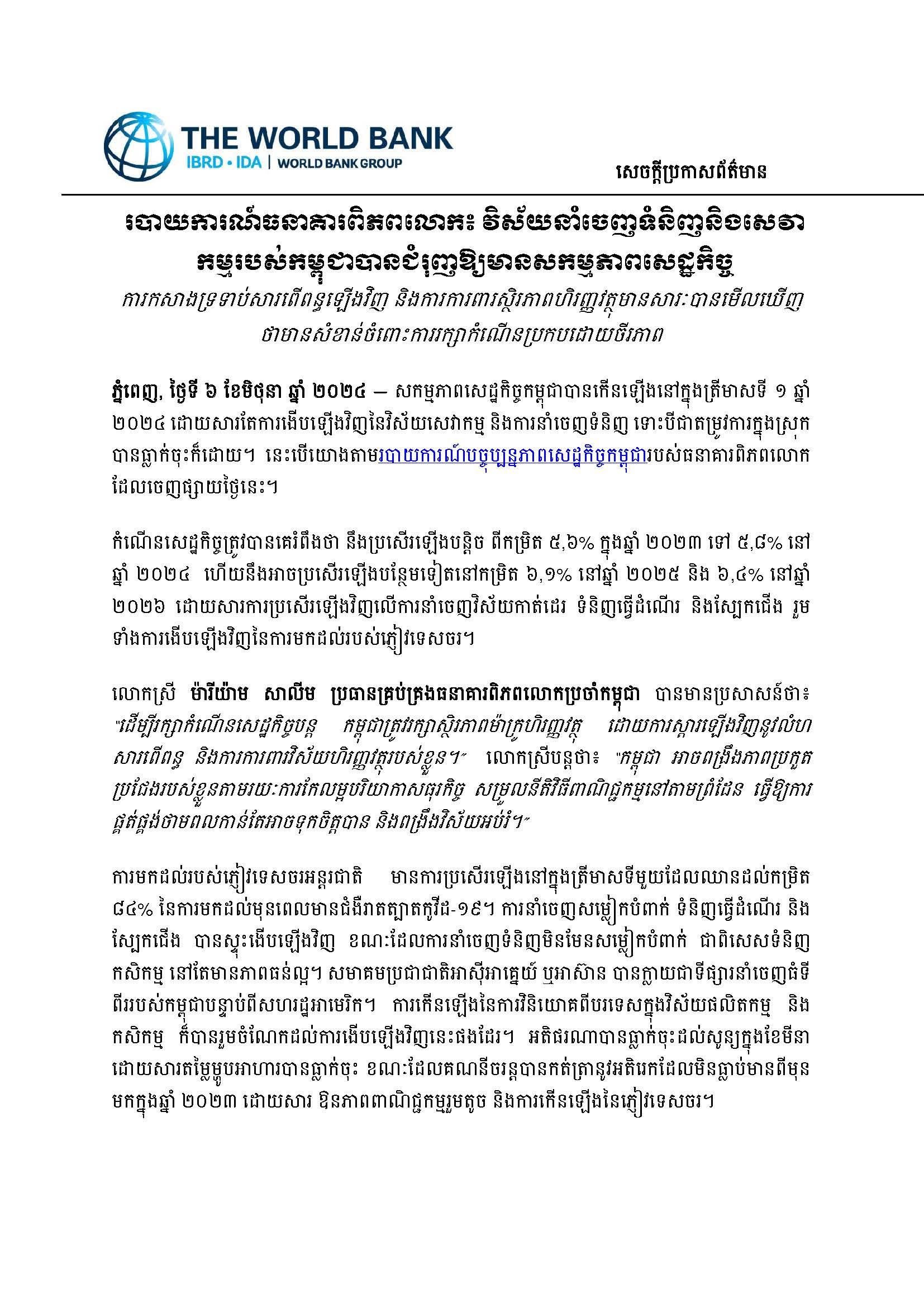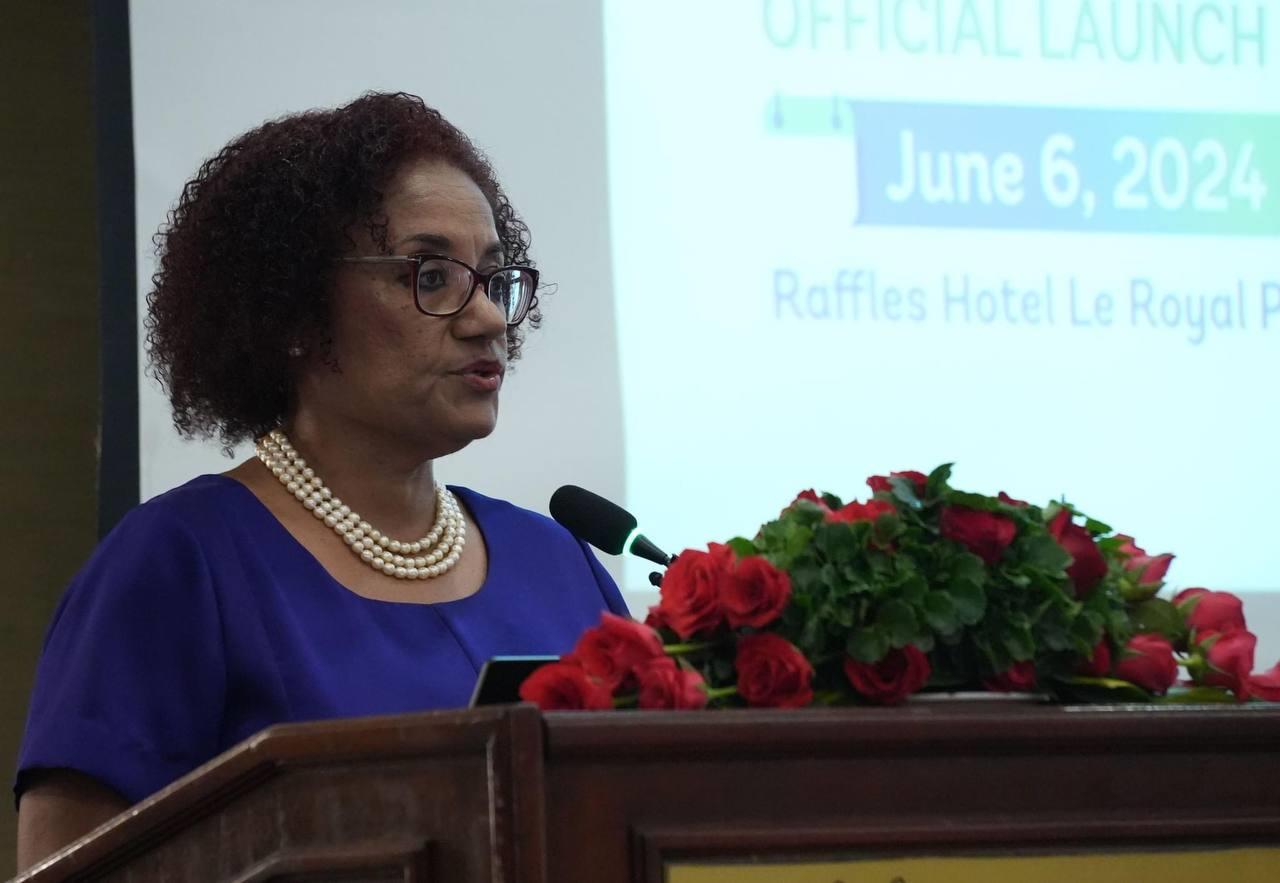Phnom Penh (FN), Jun. 6 – Cambodia’s economic activity picked up in the first quarter of 2024, driven by a revival of services and goods exports, and despite subdued domestic demand, according to the World Bank's Cambodia Economic Update, released on Thursday (Jun. 6).
Economic growth is expected to improve marginally to 5.8 per cent in 2024, up from 5.6 per cent in 2023, and should further strengthen by 6.1 per cent in 2025 and 6.4 per cent in 2026 as revival in garment, travel goods, and footwear exports and tourism propel the ongoing recovery.
"To sustain economic growth, Cambodia needs to maintain macro-financial stability by restoring fiscal space and safeguarding its financial sector,” said World Bank Country Manager for Cambodia Maryam Salim.
Maryam Salim continued, “Cambodia can also strengthen competitiveness by improving the business climate, streamlining trade procedures at borders, making the energy supply more reliable, and strengthening education."
International tourist arrivals continued to improve in the first quarter to 84 per cent of pre-pandemic levels. Exports of garments, travel goods, and footwear rebounded, while non-garment exports, especially of agricultural commodities, remained resilient.
The Association of Southeast Asian Nations (ASEAN) region has emerged as Cambodia's second largest export market after the United States. Rising foreign investment in manufacturing and agriculture also contributed to the recovery.
Inflation declined to zero in March as food prices decelerated, while the current account recorded an unprecedented surplus in 2023 as the trade deficit narrowed and tourism receipts rose.
Construction activity remains subdued, however, as the property market correction continues. As a result, domestic credit growth has slowed significantly, weighing on private consumption and domestic revenue collection.
A special focus section examines how Cambodia can strengthen its education system to increase worker skills and boost productivity. Recommendations include stepping up investment in early childhood and primary education, enhancing teacher effectiveness, and making the distribution of resources more equitable.
=FRESH NEWS





